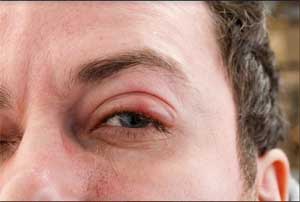- Home
- Editorial
- News
- Practice Guidelines
- Anesthesiology Guidelines
- Cancer Guidelines
- Cardiac Sciences Guidelines
- Critical Care Guidelines
- Dentistry Guidelines
- Dermatology Guidelines
- Diabetes and Endo Guidelines
- Diagnostics Guidelines
- ENT Guidelines
- Featured Practice Guidelines
- Gastroenterology Guidelines
- Geriatrics Guidelines
- Medicine Guidelines
- Nephrology Guidelines
- Neurosciences Guidelines
- Obs and Gynae Guidelines
- Ophthalmology Guidelines
- Orthopaedics Guidelines
- Paediatrics Guidelines
- Psychiatry Guidelines
- Pulmonology Guidelines
- Radiology Guidelines
- Surgery Guidelines
- Urology Guidelines
85 million people treated for trachoma through expanded access to medicine- WHO

Geneva : New data released by the World Health Organization (WHO) show a remarkable 63% increase in the number of people treated with an antibiotic for trachoma during the period 2014–2016, considerably improving prospects for the global elimination of the disease. The surge is mainly due to an expanded access to donated azithromycin1 .
“We now have an accurate picture of where interventions are needed, following the recent completion of the Global Trachoma Mapping Project which identified trachoma-endemic areas in 29 countries” said Dr Minghui Ren, WHO’s Assistant Director-General for HIV/AIDS, Tuberculosis, Malaria and Neglected Tropical Diseases. "The availability of free and quality-assured azithromycin enables us to support countries in their efforts to save the sight of millions of vulnerable people."
Trachoma – the world’s leading cause of infectious blindness – is responsible for the visual impairment of about 1.8 million people worldwide, including 450 thousand who are irreversibly blind.
The disease is found in the poorest and most marginalized communities of Africa, Asia, Central and South America, Australia and the Middle East. In 2016, more than 190 million people lived in areas needing interventions; 85 million of them were treated by azithromycin, compared with 52 million in 2014 when an estimated 204 million people required treatment.
“We’re excited about this tremendous progress” said Dr Anthony Solomon, Medical Officer at WHO’s Department of Control of Neglected Tropical Diseases. “It would not have been possible without the support of ministries of health, bilateral donors, foundations, non-governmental organizations, and more importantly, field workers who make it possible to deliver azithromycin to the people who need it most.”
Alongside the 63% increase in antibiotic treatments, the period 2014–2016 saw a steep rise in the number of people with advanced trachoma receiving operations to prevent further loss of sight - from 139,441 in 2014 to 260,759 in 2016, representing an 87% increase.
“These increases in the numbers of people managed surgically and given antibiotic treatments are both tremendously encouraging” said Dr Dirk Engels, Director of the Department of Control of Neglected Tropical Diseases. “We encourage countries to prioritize interventions and make the much-needed additional investment to achieve the elimination of blindness due to trachoma.”
Surveys
A major advance in mapping trachoma occurred with the completion in January 2016 of the Global Trachoma Mapping Project during which an estimated 2.6 million people in 29 countries were examined in just over three years.
WHO maintains updated information on its Global Health Observatory which is used by national trachoma programmes to target delivery of the WHO-recommended SAFE Strategy.
Prevalence estimates are critical for planning the delivery of donated azithromycin to remote areas, help health workers plan eye surgeries and improve access to safe water, sanitation and hygiene.
The disease
Trachoma is caused by the bacterium Chlamydia trachomatis.
Infection is transmitted by fingers, fomites and flies, usually in conditions of very poor access to water and sanitation. Repeated episodes of infection over many years result, in some people, in scarring of the conjunctivae and in-drawing of the eyelashes so that they scratch the eyeball. This is known as trichiasis. Trauma to the cornea from the eyelashes leads to visual impairment.
Elimination as a public health problem can be achieved through the WHO-recommended SAFE strategy: surgery for trichiasis, antibiotics to clear C. trachomatis infection, and facial cleanliness and environmental improvement to reduce transmission.

Disclaimer: This site is primarily intended for healthcare professionals. Any content/information on this website does not replace the advice of medical and/or health professionals and should not be construed as medical/diagnostic advice/endorsement or prescription. Use of this site is subject to our terms of use, privacy policy, advertisement policy. © 2020 Minerva Medical Treatment Pvt Ltd